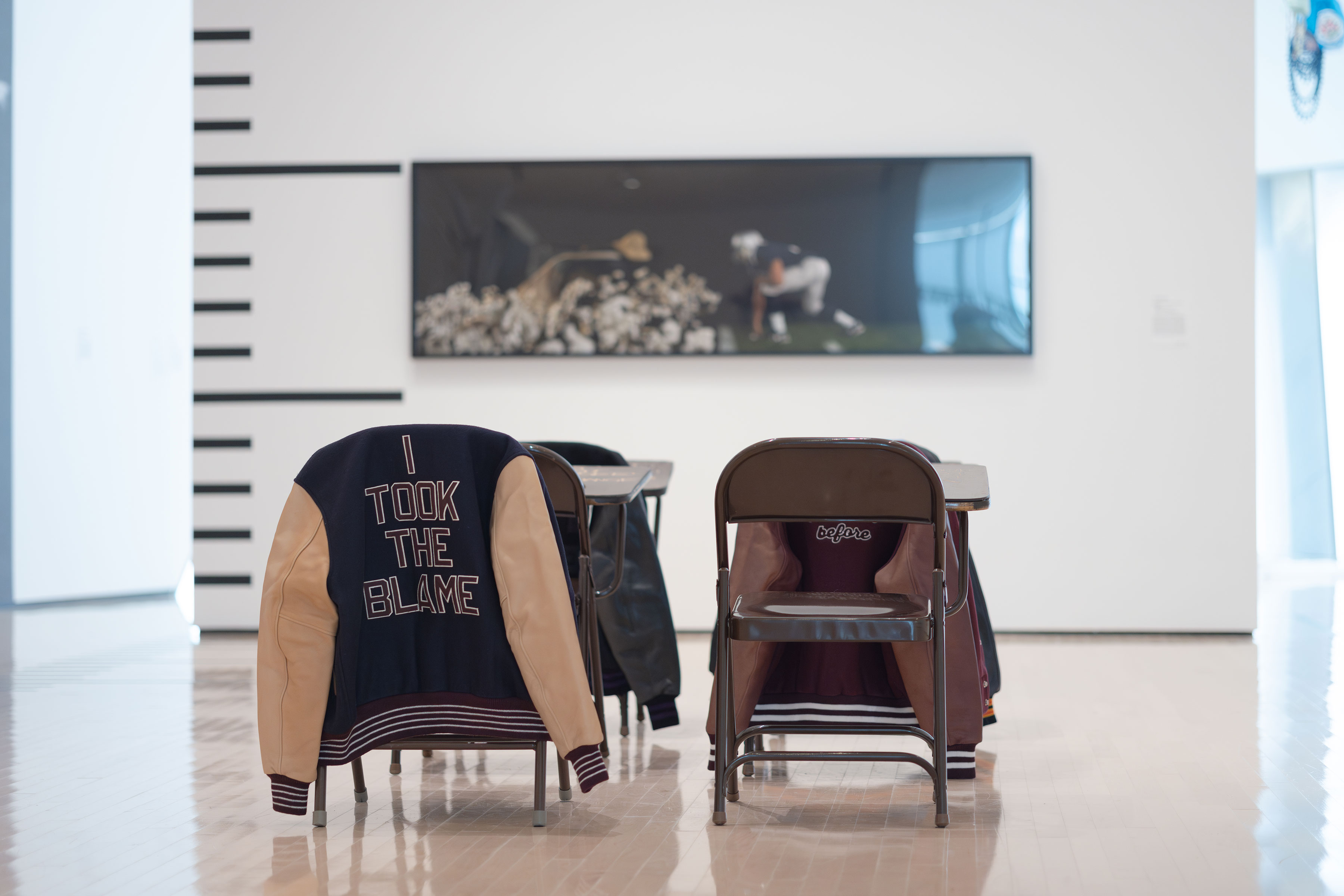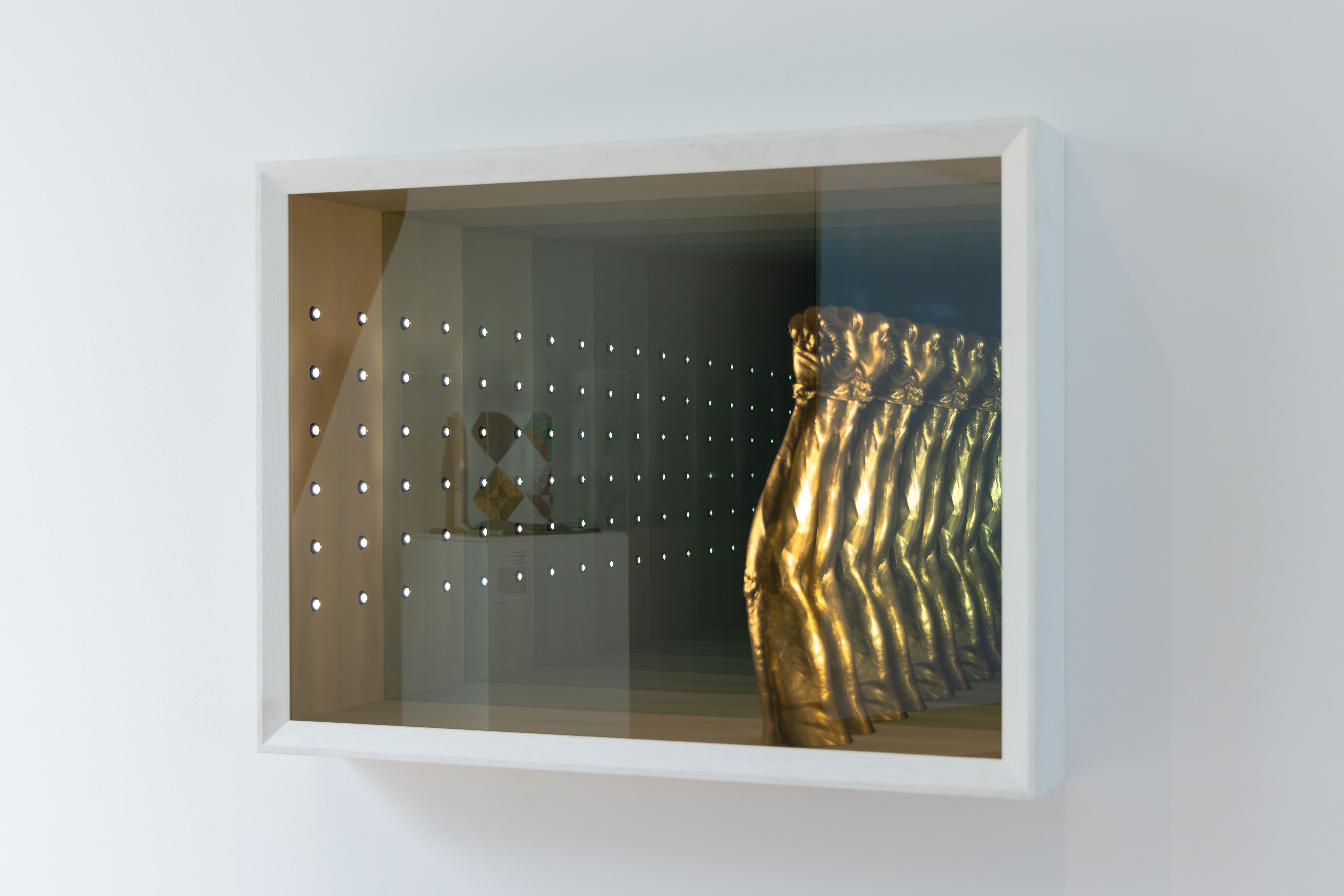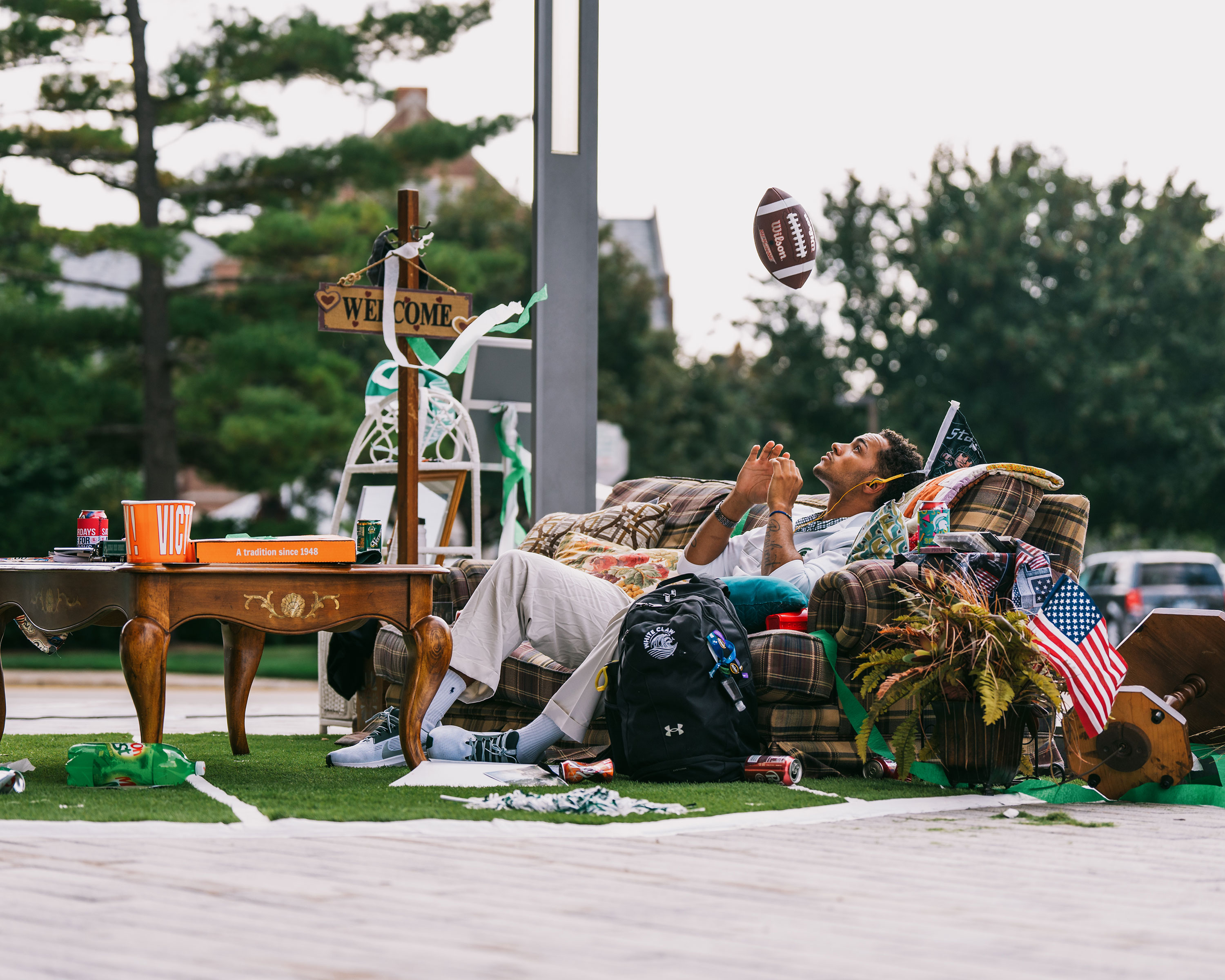Growing up both playing sports and creating art, Steven Bridges learned that artists and athletes were among the most influential figures in societies throughout history — and it’s still true today.

Now, Bridges, the interim director and senior curator of Michigan State University’s Eli and Edythe Broad Art Museum, is exploring the intersection of arts and sports, and what these two forms of expression can teach us about the world at large.
Bridges curated “Resistance Training: Arts, Sports and Civil Rights,” an exhibition at the MSU Broad Art Museum examining the way artists and athletes have given voice to and been engaged in struggles for civil rights and social justice. It is on view through Feb. 18.
“Knowing that arts and sports are so important in defining the cultures that we all exist in and contribute to, it seems an important moment to shine a light on that and show the interconnected nature of them,” Bridges said. “Artists are often inspired by moments within sports history, specifically because they are also moments of cultural history.”
Arts, sports, civil rights and MSU’s legacy
Pero Dagbovie, University Distinguished Professor of History, was featured in the program for “Resistance Training.” He said arts and sports played a major role in the Civil Rights Movement.
“During this Civil Rights Movement, artists incorporated civil rights struggles in their various mediums: theatre, poetry, fiction — you name it,” he said. “Black athletes such as Jackie Robinson, Muhammad Ali, tennis player and golfer Althea Gibson, basketball player Bill Russell and track star Tommie Smith were civil rights champions who used their status as public figures to advance the cause.”

Among the artworks included in the exhibition is a sculptural work by artist Glenn Kaino, which features a gold cast of Smith’s fist in a frame of infinity mirrors. Smith became famous for raising his fist at the podium to protest the treatment of Black individuals in the U.S. after winning the gold medal in the 200-meter race at the 1968 Olympic Games in Mexico City.
“Smith raising his fist was not only a significant moment in sports history, but it was also a significant moment in U.S. and international history,” said Bridges. “With this piece, the artist’s intention was to speak to the legacy artists and athletes have as advocates for social change.”
The exhibition also pays particular attention to MSU’s legacy in sports and civil rights by including objects highlighting some of the first women athletes and athletes of color to represent the Spartans. A key component of this legacy is MSU’s 1966 football team, which played a crucial role in the integration of college football, with at least 18 Black players on its roster, including quarterback Jimmy Raye and co-captains George Webster and Clinton Jones. They won the national championship and played to a 10-10 tie versus Notre Dame in “The Game of the Century.”
"It's very timely to discuss the topic of arts, sports and civil rights at Michigan State University because the present is nothing more than a manifestation of the past,” said Dagbovie. “That doesn’t mean that history simply repeats itself. It means that we can learn more and better understand the present through the lens of the past.”
Campus collaborations
“Resistance Training” not only opened up opportunities to collaborate with athletics, it also has allowed for collaborations with other units on campus, including MSU Libraries, the School of Journalism, the Film Studies Program and the Department of Theatre.

“Collaborations and strategic partnerships are key to everything we do here at the museum. It’s important to us that we reach out and build those relationships across campus,” Bridges said. “We have a certain level of expertise here at the museum, but it’s so much more interesting and valuable to reach out to different collaborators across campus and bring their voices and their experiences into dialogue with us to be able to kind of present a fuller picture to our audiences.”
In the fall, mike durkin, a visiting artist-in-residence with the MSU Department of Theatre, collaborated with the MSU Broad Art Museum on a performance installation during homecoming weekend titled “And those Spartans Play Good Ball.” The installation, designed to resemble a tailgate, was created by students in the Department of Theatre, who also acted out roles of people you might see at a tailgate: someone supervising the grill, someone watching TV, a group of people playing yard games.
“The collaboration with mike durkin began as an artist project that was trying to create conversation of how athletics and tailgating create identity in community,” said Stephen Di Benedetto, chair of the MSU Department of Theatre.
The installation was part of durkin’s “S-P-O-R-T-S-P-L-A-Y: Go Green!” project, which examines the intersection between arts, sports and community on college campuses. The project was conceived when durkin, a former collegiate football player, became interested in theatre after his playing career abruptly ended. He noticed that athletics and arts are both catalysts for deeper conversations, beyond what you see on the canvas, stage, field or court.
“I split my time between Philadelphia and New York City and, while in Philly in particular, I really observed how sports brought the community together. People from all different walks of life, with different beliefs and perspectives, could all agree in their allegiance to the city’s sports teams,” durkin said. “That was how they shared common knowledge and built common ground with each other.”
Campus as a canvas
College campuses represent spaces where sports are an integral part of the community. MSU is the fourth university where durkin has completed the “S-P-O-R-T-S-P-L-A-Y" project; he’s also done similar work at Louisiana State University, Texas A&M and the University of Houston.

“Sports are really celebrated on college campuses, and in the towns, cities, region around the campus. They are a uniting force for the community — I want to explore this through my art and encourage students to think about the different ways the arts and athletics reflect the values of a community and tell its story.”
Di Benedetto agrees.
“Arts and athletics provide a way to talk about the world or to talk about experiences and to connect,” he said. “That is what the power of art is. It’s somebody else’s view of the world triggering us to shift our attention in a way that makes us experience the world in a slightly different way or to think about the world in a different way.”
Bridges is hopeful that through “Resistance Training” and other efforts, MSU is encouraging curiosity and critical thinking.
“I hope that, through looking at the intersection of art and sports, there’s this reflective moment for people to think about the ways in which they direct people’s attention or otherwise kind of exert their own influence to guide the advancement of causes that are important to them,” he said.